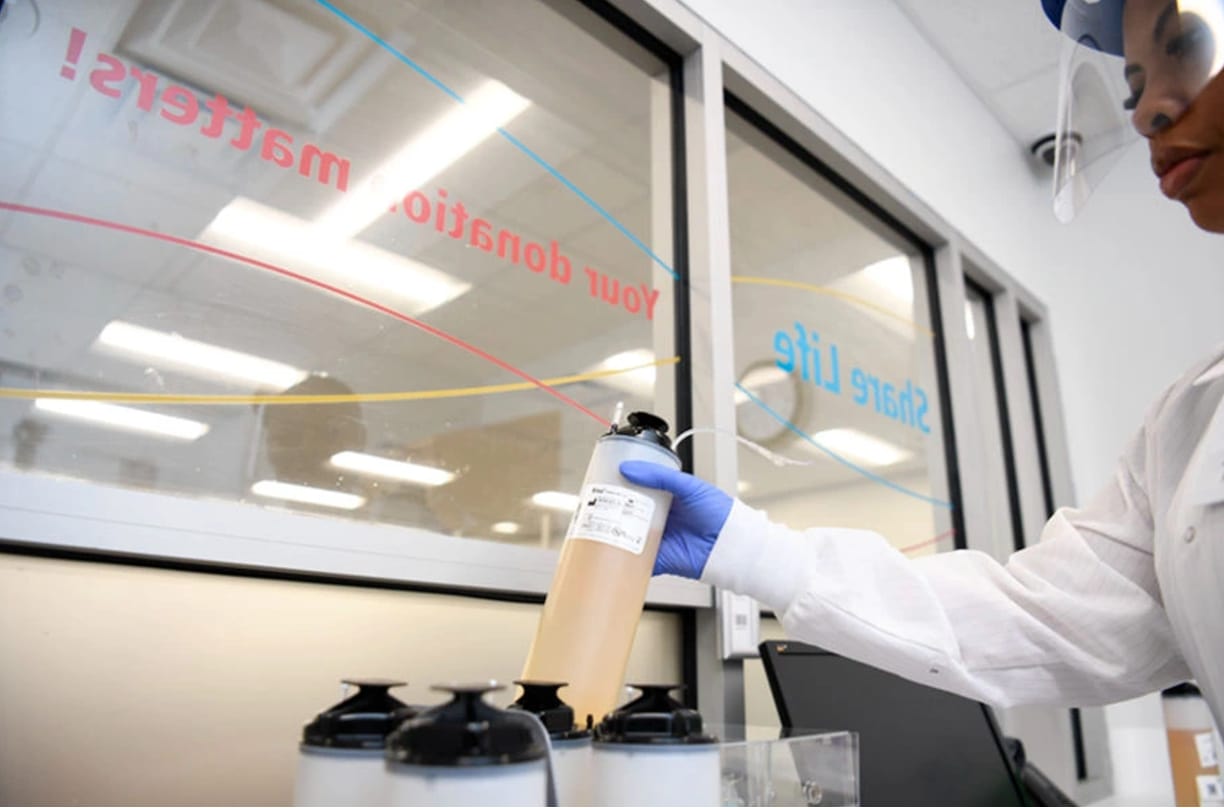Difference Between Plasma, Platelet, & Blood Donation

Donating blood vs plasma vs platelets: what’s the difference?
Donating plasma, platelets, and blood are all essential ways to help others, but there are key differences between the three. Understanding these differences can help you decide which type of donation is right for you.
When you donate plasma, only the liquid part of your blood is collected. Red blood cells and platelets are separated out and returned to you. Plasma donation takes about 1.5 hours and can be done more often than blood donation.
Platelet donation is similar to plasma donation, but instead of collecting the liquid part of your blood, platelets are removed. Platelets are tiny cells that help stop bleeding. Platelet donation takes about 2 hours and can be done every 2 weeks.
Blood donation is the most common type of donation. When you donate blood, the entire bag of blood is collected, including the red blood cells, plasma, and platelets. Blood donation takes about 8 minutes and can be done every 56 days.
The type of donation that is right for you depends on your individual circumstances. If you are interested in donating plasma, platelets, or blood, talk to your doctor to see if you are eligible.
What are the similarities between plasma, platelet, and blood donation?
Plasma, platelet, and blood donations share several fundamental similarities. Firstly, all three types of donations involve the voluntary act of giving a component of your blood to help others in need. The process is safe and regulated by the Food and Drug Administration (FDA) to protect the well-being of both donors and recipients. Furthermore, each donation has the potential to save lives and improve the health of those who rely on blood transfusions or blood-derived products. Whether it's plasma, platelets, or whole blood, your contribution plays a vital role in supporting patients undergoing surgery, battling illnesses, or facing life-threatening conditions. By choosing to donate, you become part of a collective effort to enhance community health and well-being.
What to expect during plasma donation
Your first plasma donation can take between 2 and 2.5 hours. Every donation after will be closer to 90 minutes (about 1 and a half hours). The process involves having a needle inserted into a vein in your arm, similarly to when donating blood or having blood drawn. Your blood will then be drawn through the needle and into a machine that will separate the plasma from the red blood cells and platelets. The plasma will be collected in a bag and the red blood cells and platelets will be returned to your body.
You may experience some discomfort during the donation. This discomfort may feel like a slight pinch from the needle and some pressure in your arm as the blood is drawn. You may also feel lightheaded or dizzy, but this is usually temporary and will go away shortly after the donation.
After the donation, you will be given some time to rest and have something to drink. You should avoid strenuous activity for the rest of the day. It is also important to drink plenty of fluids to help replace the fluids you lost during the donation. Plasma donation is a safe and rewarding way to help others. By donating plasma, you can help to save lives and improve the health of those who rely on blood transfusions or blood-derived therapies. Learn more about the plasma donation process here.
Explore More Articles

Qualifications for Donating Plasma
15 January, 2024
Are you interested in making a difference in your community and saving lives? Donating plasma is a simple and rewarding way to help others. In this blog post, we will provide you with all the information you need to know about the qualifications for donating plasma. This will include general requirements, health and lifestyle restrictions, and information on deferrals. We will also provide you with information on how to get started as a first-time donor. So, what are you waiting for? Sign up to donate plasma today and start making a difference!

How Often Can You Donate Plasma?
3 January, 2024
Donating plasma is a selfless act that can save and improve the lives of others. It's a safe and simple process that involves separating plasma, the liquid component of blood, from red blood cells. This plasma is then used to create life-saving medications for people with immune deficiencies, bleeding disorders, and other serious conditions. By donating plasma regularly, you can make a significant impact on the well-being of others and contribute to the medical advancements that save lives. Sign up to donate plasma today and become a part of this life-saving movement!
